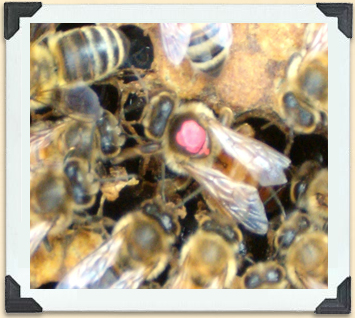Life in a Hive

To identify her among thousands of bees in a hive, beekeepers often mark the queen with a tiny dot of colour.
© Ontario Beekeepers Association, Technology Transfer Program
Queen Bee
Each honeybee colony usually has only one fertile female, the queen and she lays all the eggs in the hive. In the spring, when the colony is growing at its fastest pace, a productive queen can lay up to 2 000 eggs per day. She spends most of her life in the brood chamber of the hive and depends on the worker bees to feed her and dispose of her waste.
When worker bees decide that a new queen is needed (because, for example, her egg production is dwindling), they feed a new larva on royal jelly alone. As a result, it develops into a sexually mature female bee. She is fed only royal jelly for the rest of her life, which can be up to four years.
You can recognize the queen by her longer and larger abdomen, although beekeepers often mark her with a permanent pen or a daub of paint so she's easier to identify. Beekeepers need to make sure the queen stays healthy and continues to lay eggs so that the colony survives.




